November 2024
The global anti-fatigue mats market size was USD 1.80 billion in 2023, calculated at USD 1.89 billion in 2024 and is expected to be worth around USD 3.09 billion by 2034. The market is slated to expand at 5.03% CAGR from 2024 to 2034.
The global anti-fatigue mats market size is worth around USD 1.80 billion in 2024 and is anticipated to reach around USD 3.09 billion by 2034, growing at a CAGR of 5.03% over the forecast period 2024 to 2034. The North America anti-fatigue mats market size reached USD 7000 million in 2023. The increasing demand for shockproof mats in the workplace to reduce pain and foot discomfort while working is fueling the growth of the anti-fatigue mats market.
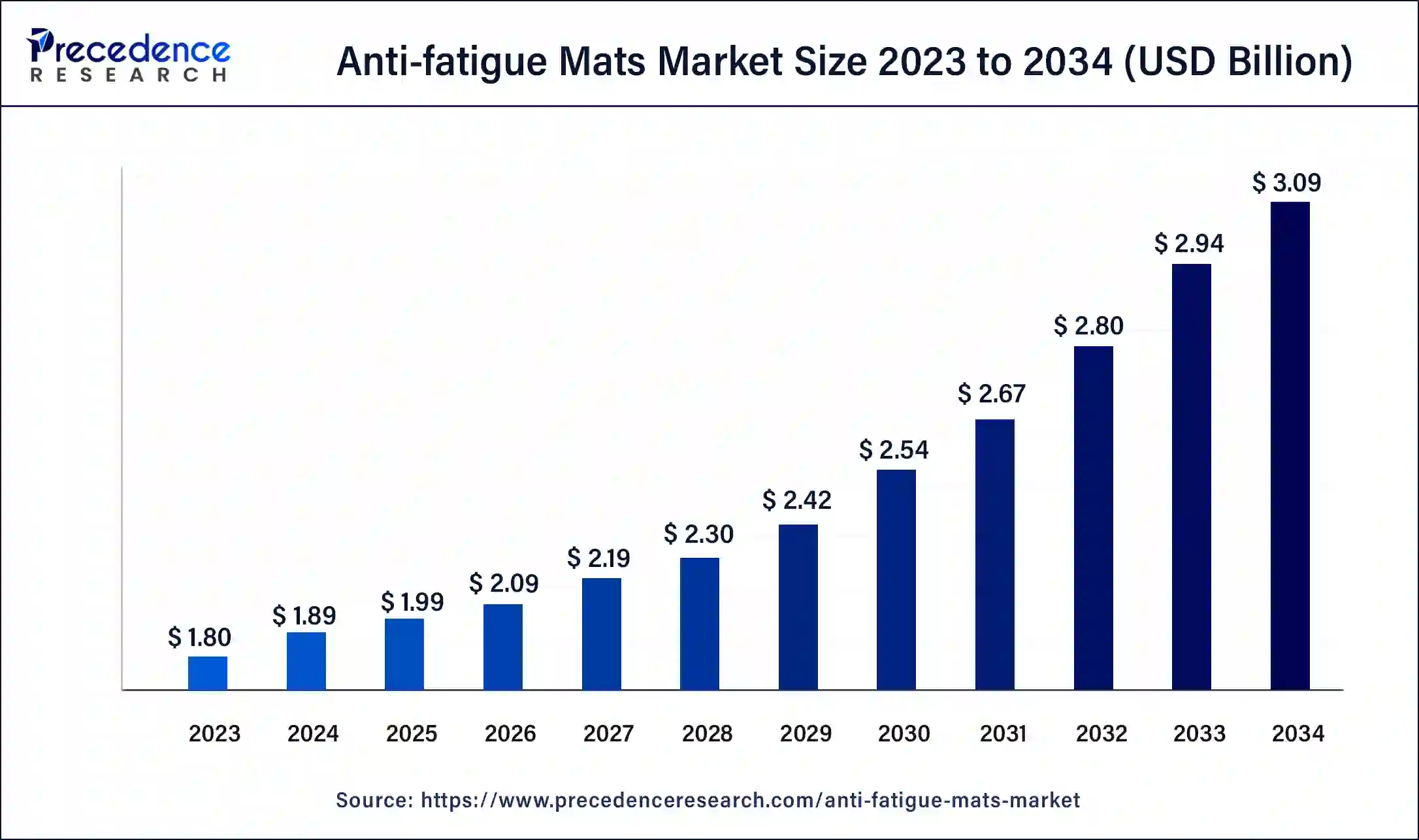
The U.S. anti-fatigue mats market size was exhibited at USD 530 million in 2023 and is projected to surpass around USD 920 million by 2034, poised to grow at a CAGR of 5.14% from 2024 to 2034.
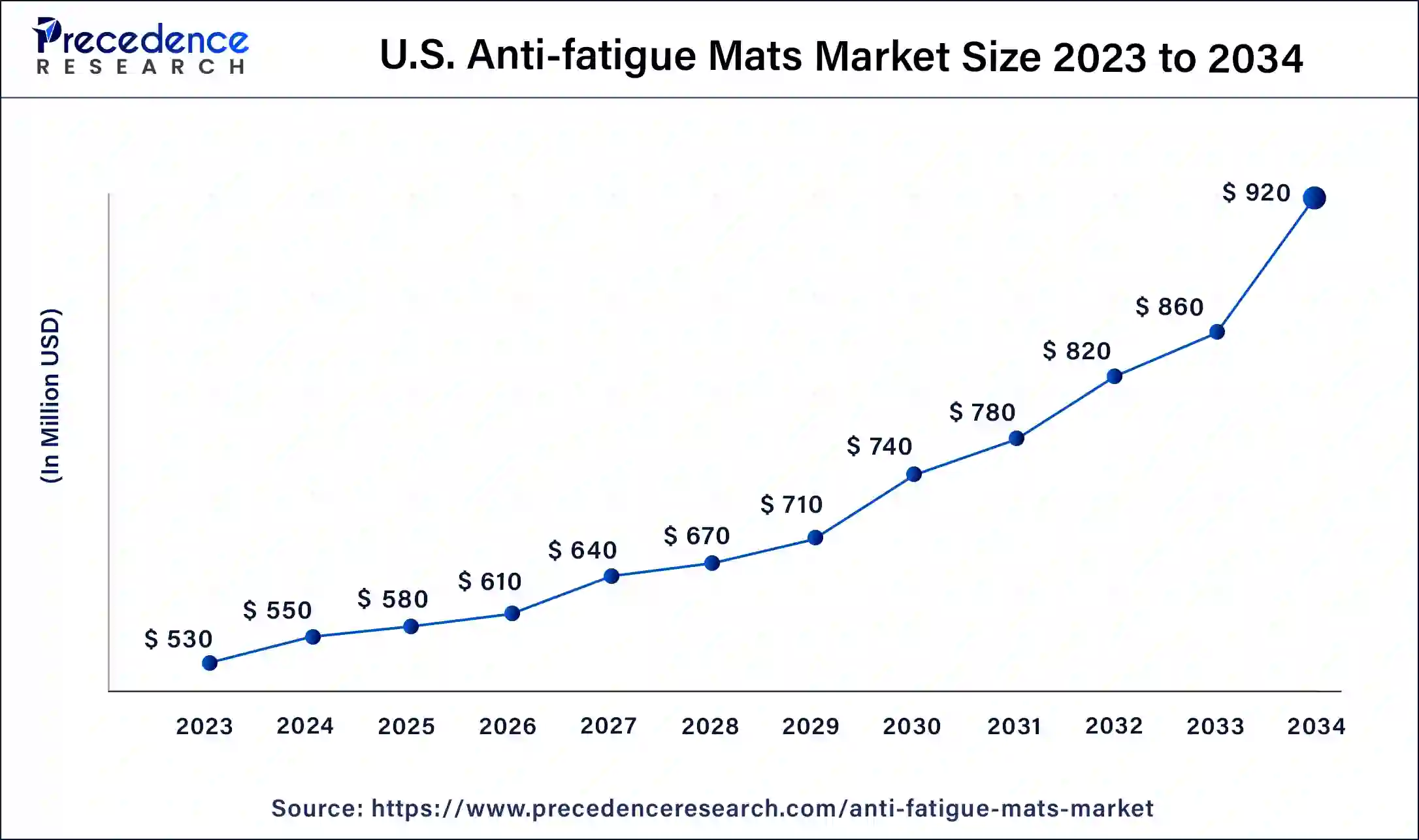
North America dominated the anti-fatigue mats market in 2023. The growth of the market is attributed to the availability of a well-developed industrial infrastructure that drives the demand for anti-fatigue mats for worker comfort and to reduce stress due to continuous working hours. Regional countries like the United States and Canada have developed industrial and commercial infrastructure, and stringent government policies on labor welfare are contributing to the increased demand for anti-fatigue mats. The United States spends a significant amount on lifestyle management and healthcare at home, and the workplace and employers are spending an amount on employee comfort, which collectively accelerates the growth of the anti-fatigue mats market in the region.
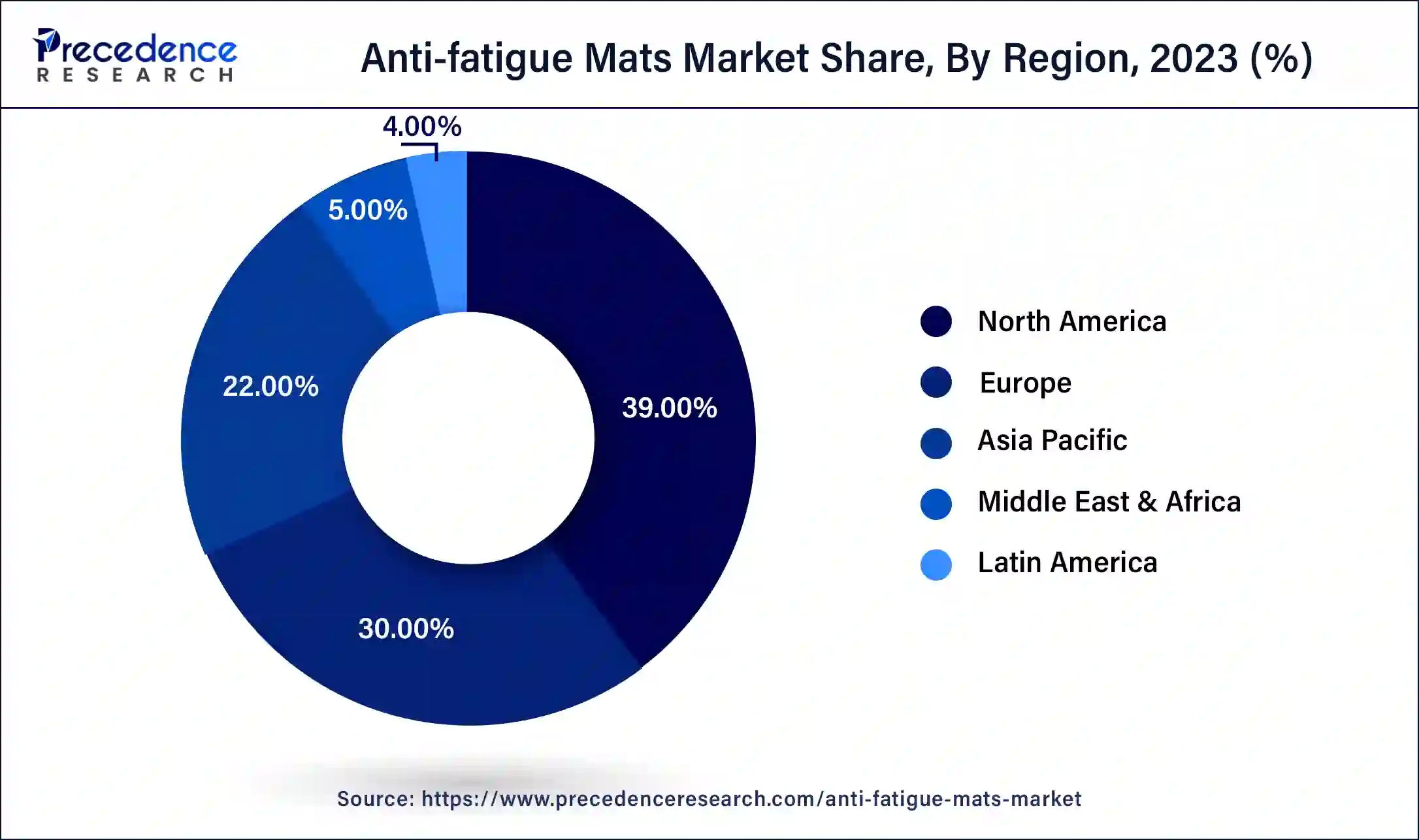
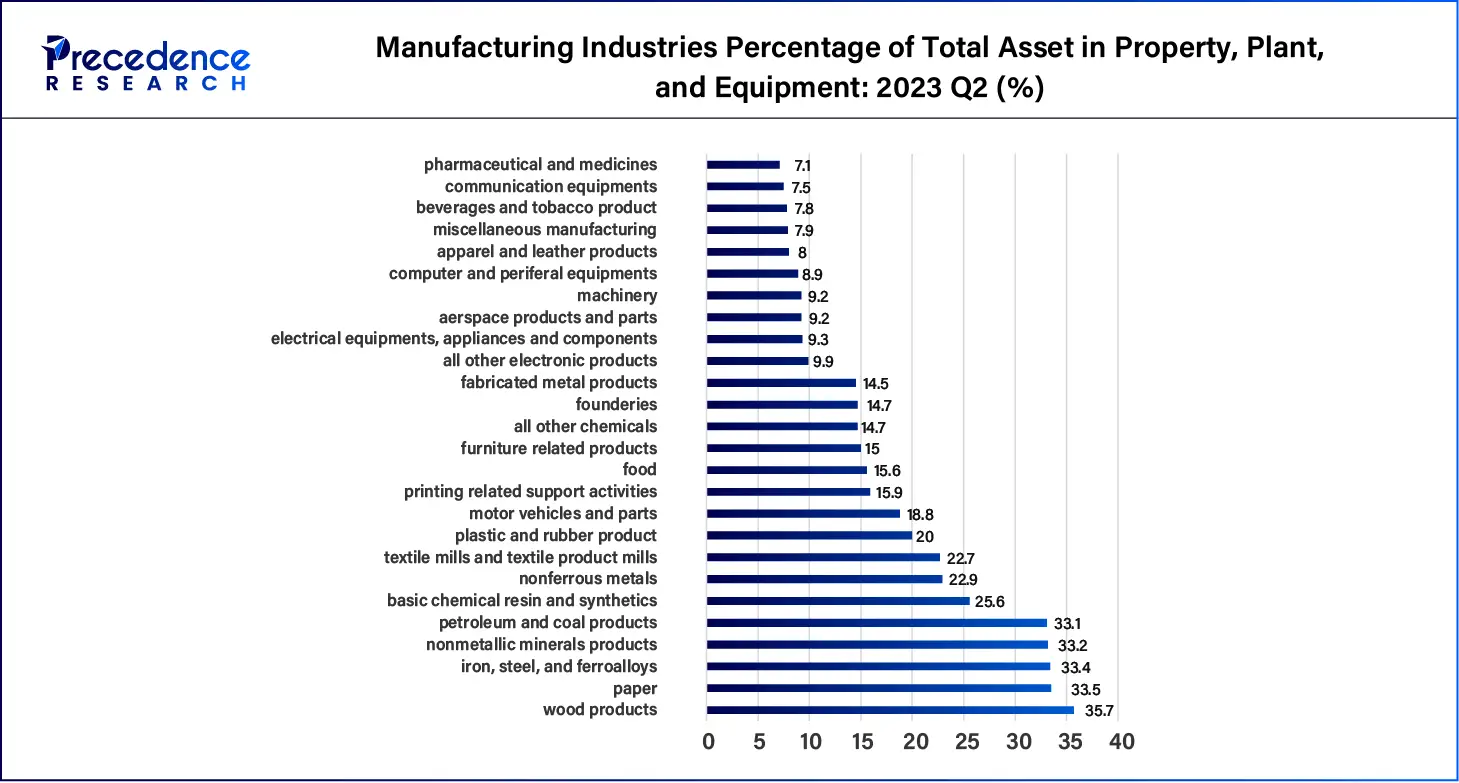
Asia Pacific is expected to have significant growth during the forecast period. The growth of the market is owing to the rising urbanization and industrial and commercial development, which boosts the demand for anti-fatigue mats. The rising consumer base in countries like India, China, and Japan is increasing the demand for industries to cater to the rising demand for end products. Additionally, the rising concern about the employees’ health is driving the growth of the anti-fatigue mats market in the region.
The anti-fatigue mats are the products used to reduce the fatigue and stress of the workers or laborers caused by standing on hard or tense surfaces for a longer period of time. These types of mats are used to reduce food and lower limb disorders and pain due to standing in a steady position for a longer period of time. Footwear, flooring, and working positions are the leading causes of stress and discomfort in the legs and limbs while working. The discomfort, pain, stress, and disorders can directly affect the production quantity and quality. Anti-fatigue mats are adopted by a number of industrial and commercial sectors to provide relaxation to workers. The anti-fatigue mats are made of different materials such as carpeting materials, rubber, wood, and vinyl. The increasing adaptation of the anti-fatigue mats to improve working productivity is driving the growth of the anti-fatigue mats market.
First Mats launched the Hygienic Anti-Fatigue Mats; the mats are specially designed for healthcare, sterile environments, and food production facilities. The material mats can be cleaned and sterilized by steam. These mats will provide both hygiene and comfort for employees in sterile environments.
How Can AI Impact the Anti-fatigue Mats Market?
The evaluation of AI in the industrial accessories and manufacturing industries is revolutionizing the industrial sector. It improves operation and productivity by streamlining management in the industries. The development of Industry 4.0 causes the integration of AI, IoT, and automation in industrial work. A number of industry leaders are adopting AI in industrial accessories to predict equipment failures and maintenance schedules and improve efficiency. The inclination towards smart anti-fatigue mats over traditional mats due to their higher reliability by the industries for improving the health of workers and enhancing productivity.
| Report Coverage | Details |
| Market Size by 2034 | USD 3.09 Billion |
| Market Size in 2023 | USD 1.80 Billion |
| Market Size in 2024 | USD 1.89 Billion |
| Market Growth Rate from 2024 to 2034 | CAGR of 5.03% |
| Largest Market | North America |
| Base Year | 2023 |
| Forecast Period | 2024 to 2034 |
| Segments Covered | Application, Distribution Channel and Regions |
| Regions Covered | North America, Europe, Asia-Pacific, Latin America and Middle East & Africa |
The rising concern about the employees’ health
The increasing population around the globe is driving the demands for end-use industries such as healthcare, manufacturing, consumer electronics, automotive, and others, which are driving the industrial infrastructure and worker numbers. These industries are working continuously for non-stop production, which impacts the health of workers who are continuously working in the same position for long hours, which affects the production capacity and quality. The rising concern about industrial and commercial workers' health due to stress, pain, and foot discomfort drives the adoption of anti-fatigue mats. These mats help in alleviating foot discomfort and pain by providing cushioning effects, which help in reducing foot fatigue. The increasing adoption of anti-fatigue mats for providing relief from foot fatigue and other hip-related stress contributed to the increasing demand for anti-fatigue mats.
Fluctuating quality
The fluctuating quality of the raw material hampers the quality of the mats, and substandard material results in quick wearing out and results in frequent replacements, which hampers the growth of the market.
Sustainability in anti-fatigue mats
There is a rising concern over environmental pollution and global warming due to non-degradable material products. The rising awareness of carbon footprints is driving the adoption of sustainable and biodegradable materials for the manufacturing of industrial machinery and other accessories. The rising development in the eco-friendly material for the production of the anti-fatigue mats. The rising adaptation of biodegradable materials such as jute, coir, and cotton for the production of anti-fatigue mats due to natural decomposition at the end of their lifecycle. The biodegrade option also offers attractive aesthetics and attracts eco-conscious consumers. The rising concern over the adoption of the bio-degradable material over the traditionally used material in the anti-fatigue mats
The industrial segment dominated the anti-fatigue mats market in 2023. The rising adoption of anti-fatigue mats in several industrial units provides comfort and reduces the stress of the long working labor force. The rising consumer base due to the rising population causes the increased development in industrialization and the demand for continuous production. The laborers continuously working in standing positions may cause severe health issues. The anti-fatigue mats help relieve the stress and fatigue caused by continuous work. The anti-fatigue mats are installed in the assembly lines to provide comfort and reduce physical stress while operating, which results in reduced chances of getting injured and helps improve productivity.
The commercial segment is anticipated to grow at a significant rate in the anti-fatigue mats market over the studied period of 2023 to 2034. The rise in the global population and the increasing disposable income in the population are causing lifestyle preferences, and the rise in the consumer segment is driving the demand for commercialization across the countries. The increasing adoption of anti-fatigue mats in commercial settings such as hotel kitchens, hospitals, pharmaceuticals, malls, and other commercial spaces for workers who are standing for extended periods of work. Anti-fatigue mats are highly adopted in commercial settings to provide comfort, which enhances productivity.
The sales through offline channel segment led the anti-fatigue mats market in 2023. The increasing adoption of the offline channel for the buying of the product with quality checks and value-added services with the product is driving the demand for the segment. The rising availability of anti-fatigue mats with a variety of brands in retail stores and other offline channels. They provide after-sales services while using anti-fatigue mats. Offline stores are giving great discounts and other offers associated with the bulk buying of anti-fatigue mats by industries and commercial offices such as hotels, hospitals, malls, and others.
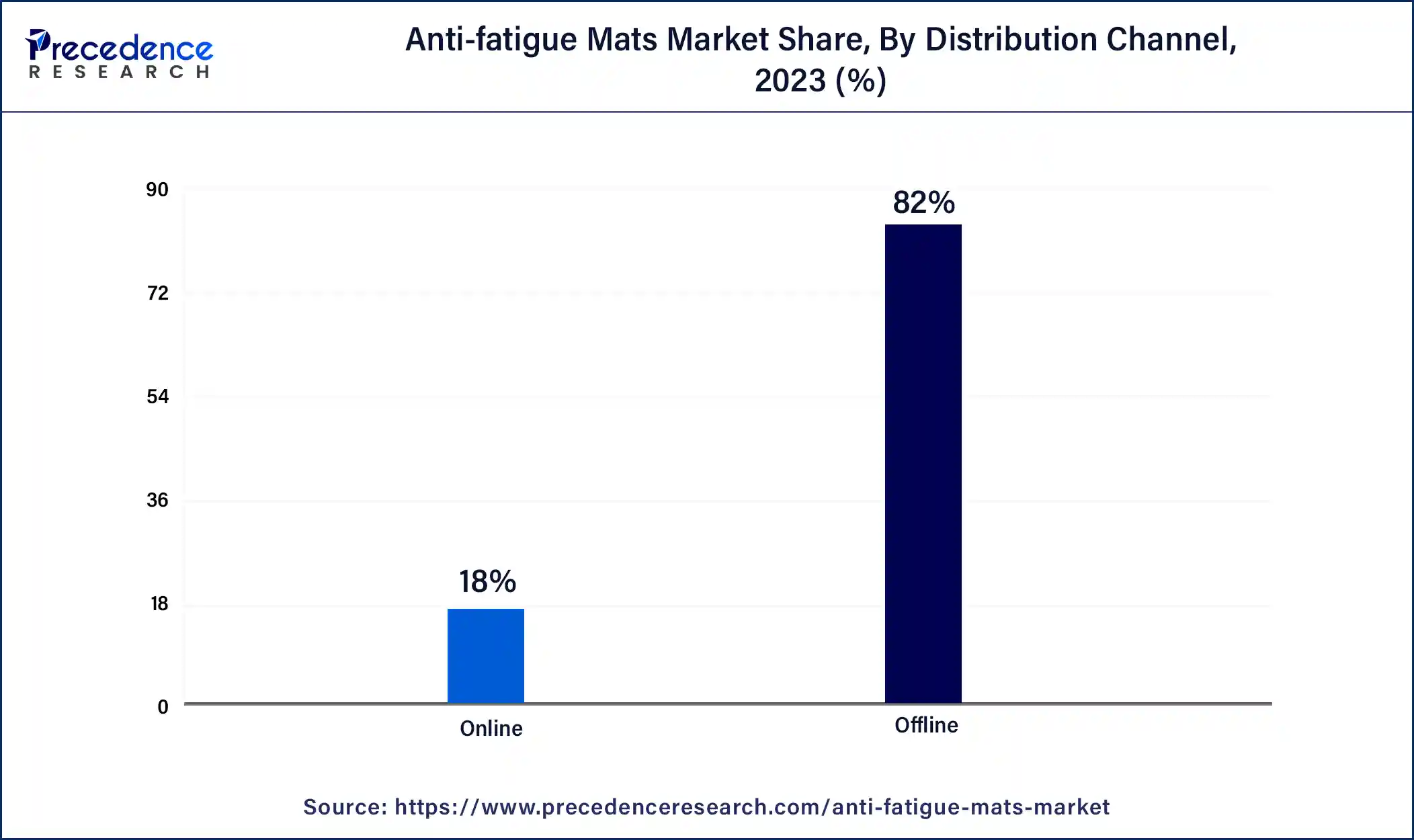
The sales through online channel segment is anticipated to witness significant growth in the anti-fatigue mats market over the forecast period. The younger population is increasing, internet penetration is increasing among individuals, and e-commerce sectors are rising with the availability of different brands. The online sales channels are mainly divided into two types: buying products from the e-commerce sector or directly from the company’s website. The online sales channel provides a wide variety of products with great discounts and offers, as well as doorstep delivery and easy return and replacement policies if the product is defective, which attracts the consumer to the online sales channel segment.
Segments Covered in the Report
By Application
By Distribution Channel
By Geography
For inquiries regarding discounts, bulk purchases, or customization requests, please contact us at sales@precedenceresearch.com
No cookie-cutter, only authentic analysis – take the 1st step to become a Precedence Research client
November 2024
September 2024